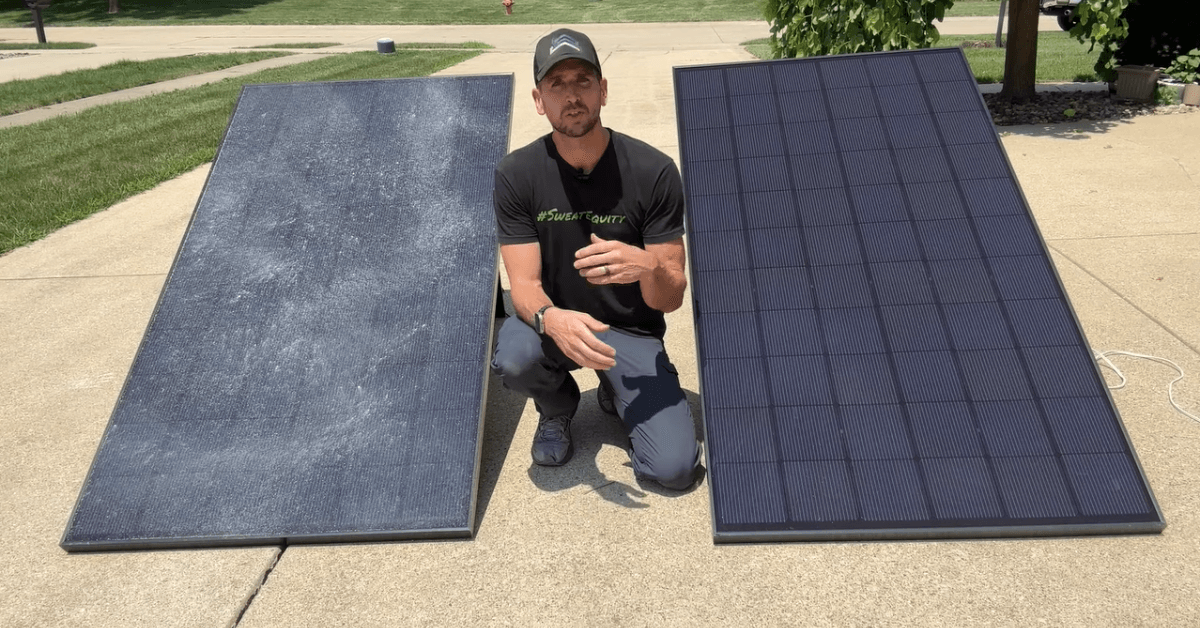In this blog post, I’m discussing a question I’ve had myself. As solar panel owners, we often come across claims suggesting that dirty solar panels can be 20% less efficient than their clean counterparts. But how much truth is there to this statement? I decided to test clean vs dirty solar panels in a YouTube video, which you can watch below. If you prefer reading, I capture the information from the video in the rest of this blog post.
The Experiment Set-up
The setup comprised two 360-watt Heliene panels linked each to a dedicated Ecoflow Delta Pro, which was responsible for storing the energy produced. To measure the influence of dirt on energy production, one of the panels was kept clean, while the other was purposely made dirty. For the latter, I used wheat flour to simulate the accumulation of dust or pollen – a common occurrence on home-installed solar panels.
I tested both panels for 2.5 hours on a partly sunny day, with cloud coverage varying throughout the period. To track the performance of each panel, readings were taken at 30-minute intervals, recording the amount of energy produced by the clean and dirty panels, respectively.
Detailed Analysis
At the end of our 2.5-hour test, the clean panel had increased its battery level from 60% to 74%, while the dirty panel lagged behind slightly, going from 60% to 72%. At a glance, it would seem like the dirty panel was 14% less efficient. However, this figure might not paint the whole picture.
To ensure a more accurate representation, I decided to delve deeper, observing the wattage produced by each panel at each interval. The maximum wattage recorded was 309 watts for the clean panel and 290 watts for the dirty one. The minimum, likely influenced by cloud coverage, dipped to 92 watts for the clean panel and 85 for the dirty one.
Upon calculating the average wattage produced over all intervals, the clean panel stood at 217 watts, while the dirty one averaged 204 watts. This data indicates a performance loss of approximately 6.3% for the dirty panel – a more reliable figure than the initial 14%.
Conclusion
Though 6.3% might not seem like a lot, it’s a loss that can add up over time. This makes a noticeable difference between clean vs dirty solar panels in the overall efficiency of your solar power system. Therefore, the experiment really proves the importance of regularly cleaning your solar panels.
Now if you need a little help cleaning those dirty panels check out this article focused on hiring a local solar panel cleaning service. For more questions, check out our Facebook group, where I and other experts answer questions about solar.

